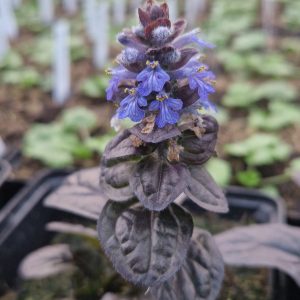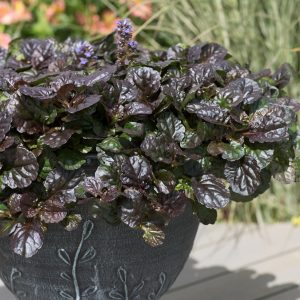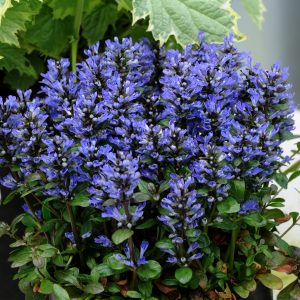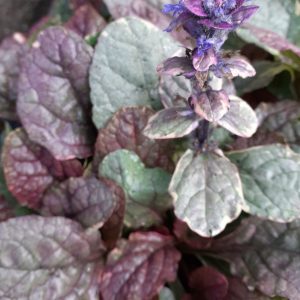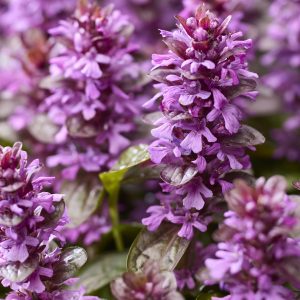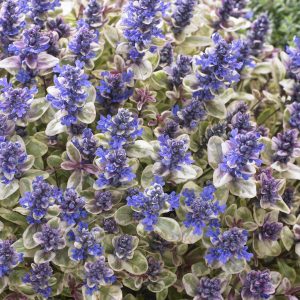Ajuga, commonly known as Bugleweed, is a versatile and low-maintenance ground cover with attractive foliage and vibrant flowers. Follow this planting guide to ensure the successful establishment and thriving growth of your Ajuga plants.
Selecting a Planting Site
Sunlight Requirements: Ajuga thrives in partial to full shade. Choose a planting site that receives filtered sunlight or dappled shade.
Soil Conditions: Plant in well-drained soil with a slightly acidic to neutral pH. Ajuga is adaptable to various soil types but prefers moist, humus-rich conditions.
Planting Time
Optimal Timing: Plant Ajuga in the spring or Autumn when the weather is mild. This allows the plant to establish its roots before facing extreme temperatures.
Planting Process
Digging Holes: Dig holes that are slightly larger than the root ball of the Ajuga plant.
Spacing: Plant Ajuga about 6 to 12 inches apart to allow for spreading. The plants will quickly fill in the space.
Plant Depth: Place the plant in the hole at the same depth it was in the container or nursery. Backfill with soil and water thoroughly.
Watering
Establishment Period: Water Ajuga regularly during the first growing season to help the roots establish. Once established, it is moderately drought tolerant.
Avoid Waterlogged Soil: Ensure good drainage to prevent waterlogged soil, as Ajuga prefers slightly moist conditions but can suffer in standing water.
Mulching
Mulch Benefits: Apply a layer of organic mulch around the plants to conserve soil moisture, suppress weeds, and regulate soil temperature.
Mulch Depth: Maintain a 2-3 inch layer of mulch, but avoid piling it against the base of the plant.
Fertilisation
Minimal Fertilisation: Ajuga generally doesn’t require heavy fertilisation. A balanced, slow-release fertiliser in the spring is usually sufficient.
Avoid Excessive Nitrogen: Limit high-nitrogen fertilisers to prevent excessive foliage growth.
Pruning
Regular Maintenance: Trim back any damaged or dead foliage as needed to maintain a neat appearance.
Rejuvenation: Consider cutting back the entire plant in late Autumn or early spring to encourage fresh growth.
Pest and Disease Management
Pest Resistance: Ajuga is generally resistant to pests. Keep an eye out for snails or slugs, especially in damp conditions.
Good Air Circulation: Ensure proper spacing between plants to promote good air circulation, reducing the risk of fungal diseases.
Division
Periodic Division: Every 2-3 years, consider dividing mature Ajuga plants to rejuvenate them. Spring or Autumn is the best time for division.
Replanting: Lift the clumps, divide them, and replant healthy sections in well-prepared soil.
By following these guidelines, you’ll establish a healthy and lush Ajuga ground cover. Adjust care based on your specific growing conditions and enjoy the beauty and resilience that Ajuga brings to your landscape.



